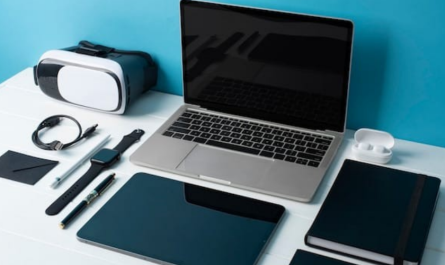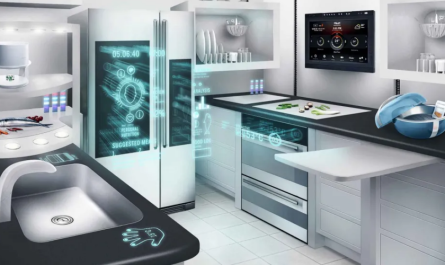3D printing, also known as additive manufacturing, has revolutionised industries across the globe. From healthcare to manufacturing, this innovative technology is reshaping how products are designed, produced, and delivered. In this article, we explore the profound impact of 3D printing on various sectors and what the future holds for this transformative technology.
Healthcare: Revolutionising Patient Care
3D printing has made significant strides in the healthcare industry, offering unprecedented opportunities for customisation and precision.
Customised Prosthetics and Implants
One of the most prominent applications of 3D printing in healthcare is the creation of customised prosthetics and implants. Traditional prosthetics can be expensive and time-consuming to produce. With 3D printing, prosthetics can be tailored to fit the unique anatomy of each patient, improving comfort and functionality. This customisation extends to implants, such as dental and orthopaedic solutions, which can be designed to match the patient’s specific needs, reducing recovery times and improving outcomes.
Bioprinting and Tissue Engineering
Bioprinting is an emerging area where 3D printing is used to create living tissues and organs. While still in the experimental stage, this technology holds promise for addressing organ shortages and advancing regenerative medicine. By layering cells to form tissues, researchers are working towards printing functional organs, which could revolutionise transplant medicine.
Medical Devices and Surgical Tools
3D printing is also transforming the production of medical devices and surgical tools. Custom surgical instruments can be created quickly and cost-effectively, tailored to specific procedures or patient needs. This not only enhances surgical precision but also reduces the risk of complications.
Manufacturing: Enhancing Efficiency and Innovation
In the manufacturing sector, 3D printing is driving efficiency and fostering innovation, offering new possibilities for product development and production.
Rapid Prototyping
3D printing enables rapid prototyping, allowing manufacturers to quickly create and test product designs. This accelerates the development process, reduces costs, and enables more iterations, leading to better final products. By shortening the time from concept to market, companies can stay competitive and responsive to consumer demands.
On-Demand Production
The ability to produce items on demand is a game-changer for manufacturing. 3D printing eliminates the need for large inventories, reducing storage costs and minimising waste. This flexibility allows companies to produce customised products in small batches, catering to niche markets and personalised consumer preferences.
Complex Geometries and Lightweight Structures
3D printing allows for the creation of complex geometries that would be difficult or impossible to achieve with traditional manufacturing methods. This capability is particularly beneficial in industries such as aerospace and automotive, where lightweight structures are crucial for performance and efficiency. By optimising designs for weight and strength, 3D printing contributes to energy savings and improved functionality.
Aerospace and Automotive: Pushing the Boundaries
Both the aerospace and automotive industries are leveraging 3D printing to push the boundaries of design and performance.
Aerospace Innovations
In aerospace, 3D printing is used to produce lightweight components that reduce fuel consumption and emissions. Parts such as engine components, brackets, and ducts are being printed with materials like titanium and aluminium, offering strength without added weight. The ability to produce parts on-demand also simplifies the supply chain, reducing lead times and costs.
Automotive Advancements
In the automotive industry, 3D printing is used for prototyping, tooling, and even end-use parts. Car manufacturers are exploring the production of entire vehicle bodies using 3D printing, which could revolutionise car design and production. This technology allows for greater design freedom, enabling the creation of aerodynamic, efficient, and aesthetically pleasing vehicles.
Construction: Building the Future
3D printing is making its mark in construction, offering innovative solutions for building and infrastructure projects.
3D-Printed Homes
The concept of 3D-printed homes is becoming a reality with companies using large-scale printers to construct houses quickly and affordably. This technology has the potential to address housing shortages and provide sustainable, low-cost housing solutions. By using locally sourced materials and minimising waste, 3D printing contributes to eco-friendly construction practices.
Infrastructure and Urban Development
Beyond residential construction, 3D printing is being used for infrastructure projects such as bridges and public structures. The ability to produce complex, customised designs allows for innovative urban development, enhancing aesthetics and functionality in public spaces.
Challenges and Future Prospects
While 3D printing offers numerous benefits, it also presents challenges that need to be addressed for wider adoption.
Material Limitations
The range of materials available for 3D printing is expanding, but there are still limitations compared to traditional manufacturing. Continued research and development are needed to broaden material options, particularly for high-performance applications.
Regulatory and Quality Concerns
Ensuring the quality and safety of 3D-printed products is crucial, especially in industries like healthcare and aerospace. Establishing standards and regulations will be essential to gain trust and ensure consistent quality across applications.
Environmental Impact
While 3D printing can reduce waste and improve sustainability, the environmental impact of the technology itself, including energy consumption and material sourcing, must be considered. Developing eco-friendly materials and energy-efficient processes will be key to minimising its environmental footprint.
Conclusion
3D printing is transforming industries from healthcare to manufacturing, offering new possibilities for innovation, efficiency, and customisation. As the technology continues to evolve, its impact will grow, driving advancements across various sectors.
By addressing challenges such as material limitations and regulatory concerns, 3D printing can reach its full potential, reshaping how we design, produce, and interact with the world around us. The future of 3D printing is bright, promising a new era of creativity and innovation in industries worldwide.







